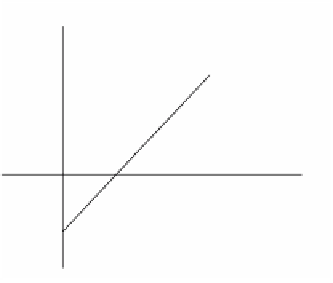Graphics Reference
In-Depth Information
x x ycz
¢=
+
+
y x y z
¢=-
+
+
z
¢=
z,
(3.29)
where a
2
+ b
2
= 1.
Comparing the results of Section 3.2 with the corresponding results for the pro-
jective plane, it is clear that the projective plane has simplified the mathematics. Aside
from theoretical gains though, of what practical value is all of this?
3.4.3
Planar Maps and Homogeneous Coordinates
This section shows how homogeneous coordinates can simplify defining maps in
the plane, in particular central projections and perspectivities. The reason is that
all
(projective) transformations can be expressed uniformly via matrices. Matrices are
convenient from the point of view of computations and it is advantageous to be able
to represent the composition of transformations by matrix products. This is not pos-
sible with Cartesian coordinates. The problem is that translations cannot be expressed
as matrices when one uses Cartesian coordinates.
Consider the projective transformation
2
2
U
a
:
PP
Æ
defined by the matrix
100
01
001
Ê
ˆ
Á
Á
˜
˜
()
=
MU
a
.
Ë
¯
This is a very special projectivity that is closely related to the central projection of the
plane onto the x-axis from the point (0,-1/a) on the y-axis. The latter sends the point
(x,y) in the plane to the point (x/(ay + 1),0) on the x-axis. To see this, consider Figure
3.11 and note that by similarity of triangles
y
(x,y)
x¢
x
-1/a
Figure 3.11.
A standard central projection.






